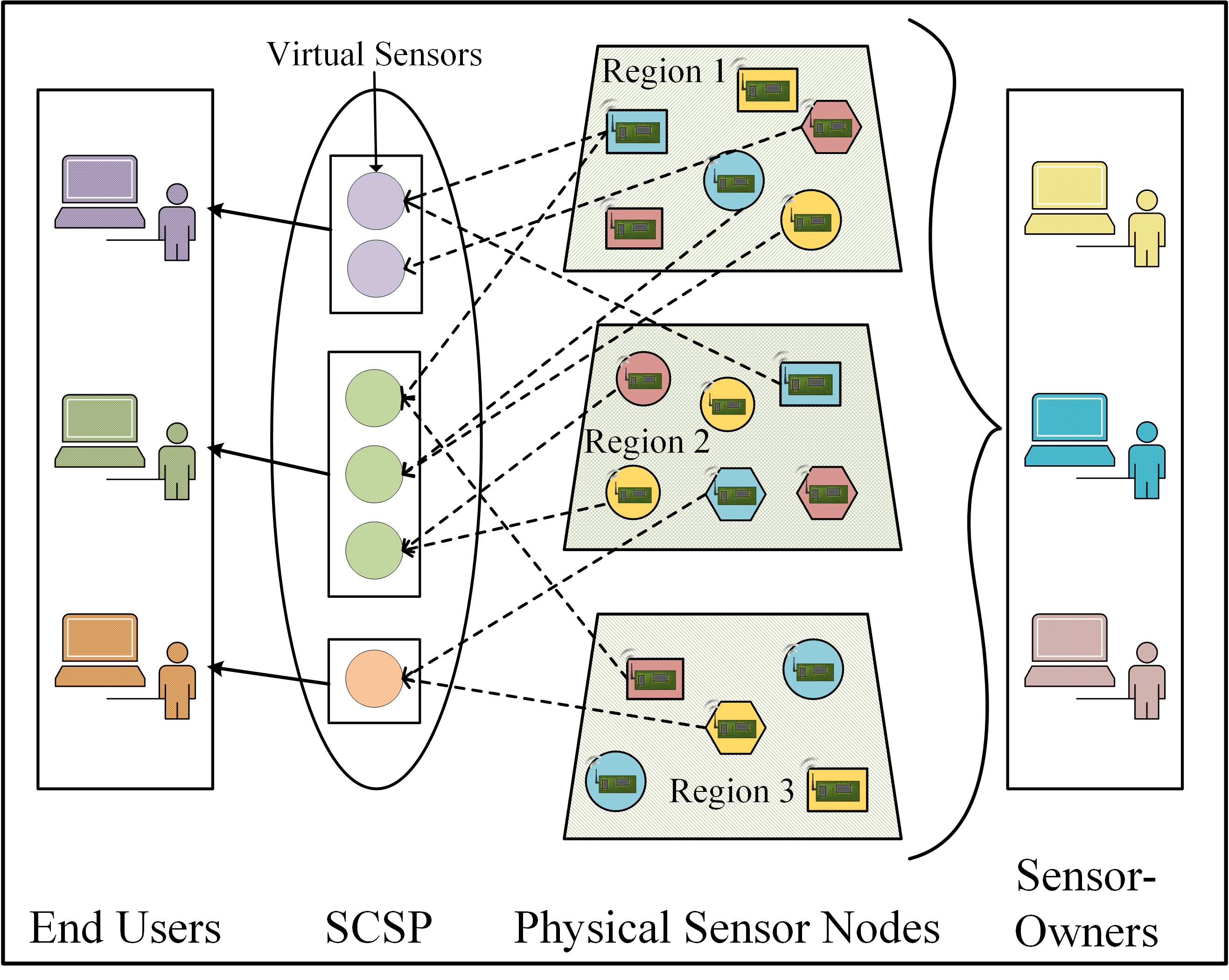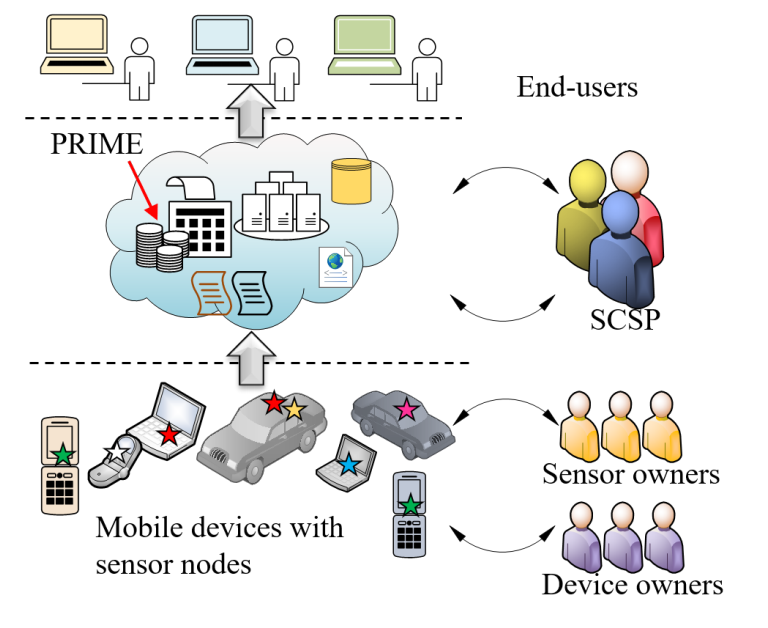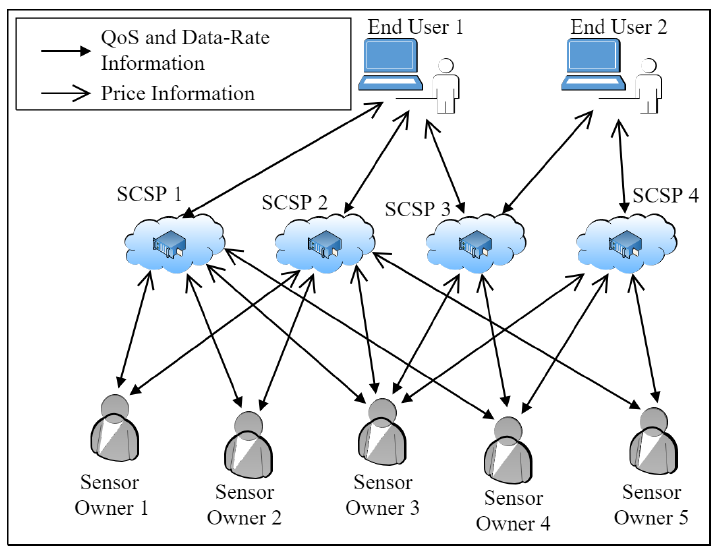Sensor-Cloud for IoT
The technological advancement of wireless sensor networks (WSNs) empowers numerous real-life applications such as target tracking, battlefield monitoring, telemonitoring, ubiquitous monitoring, and several other applications. However, these WSNs are single-user centric. On the other hand, for certain applications such as environment monitoring and telemonitoring, the data from the single sensor networks can be shareed among multiple applications. In these scenarios, Sensor-Cloud can play a huge role to provision the Sensors-as-a-Service (Se-aaS) platform, while satisfying the requirements of multiple applications by forming virtual sensors in a cloud platform. The sensor-cloud architecture has been conceived as a potential solution for multiorganization WSN deployment and data access.
We study the various aspects of the sensor-cloud architecture such as Virtualization, Caching, QoS, and Pricing. We also develop and analyze various models to characterize the performance of sensor-cloud.





